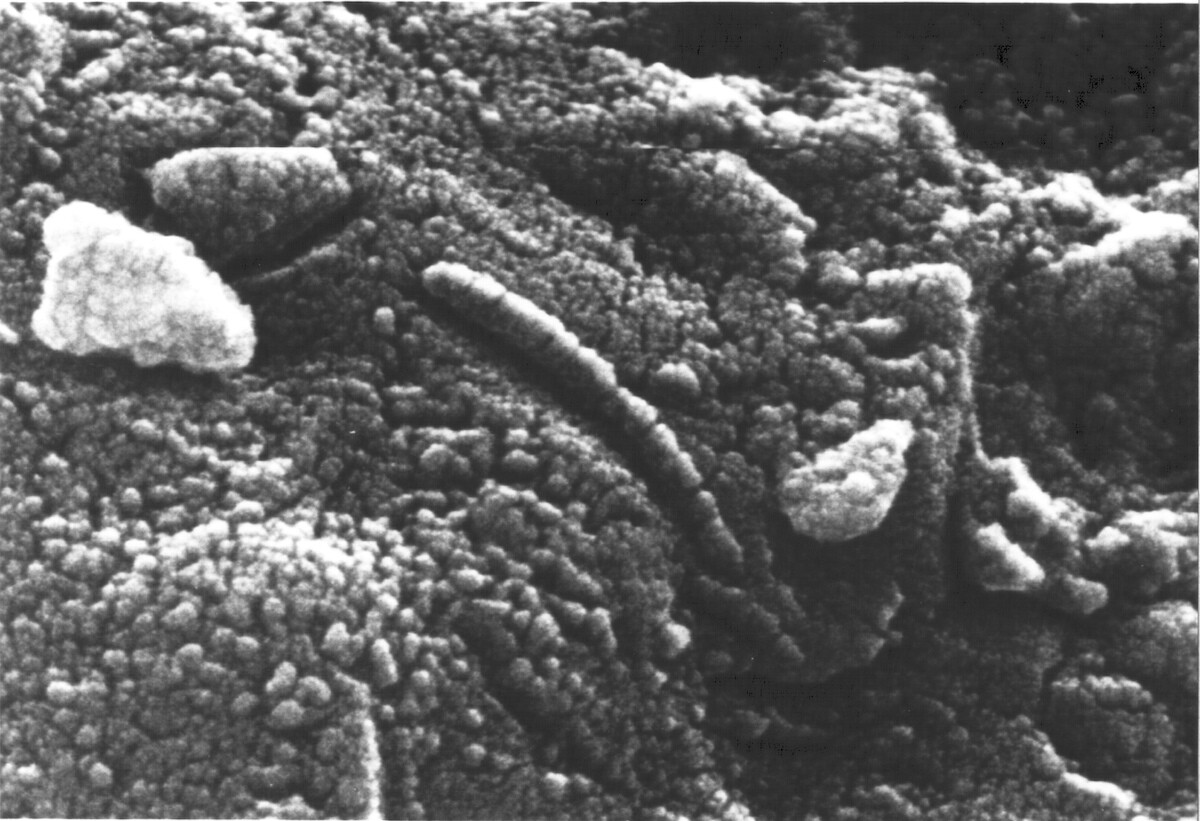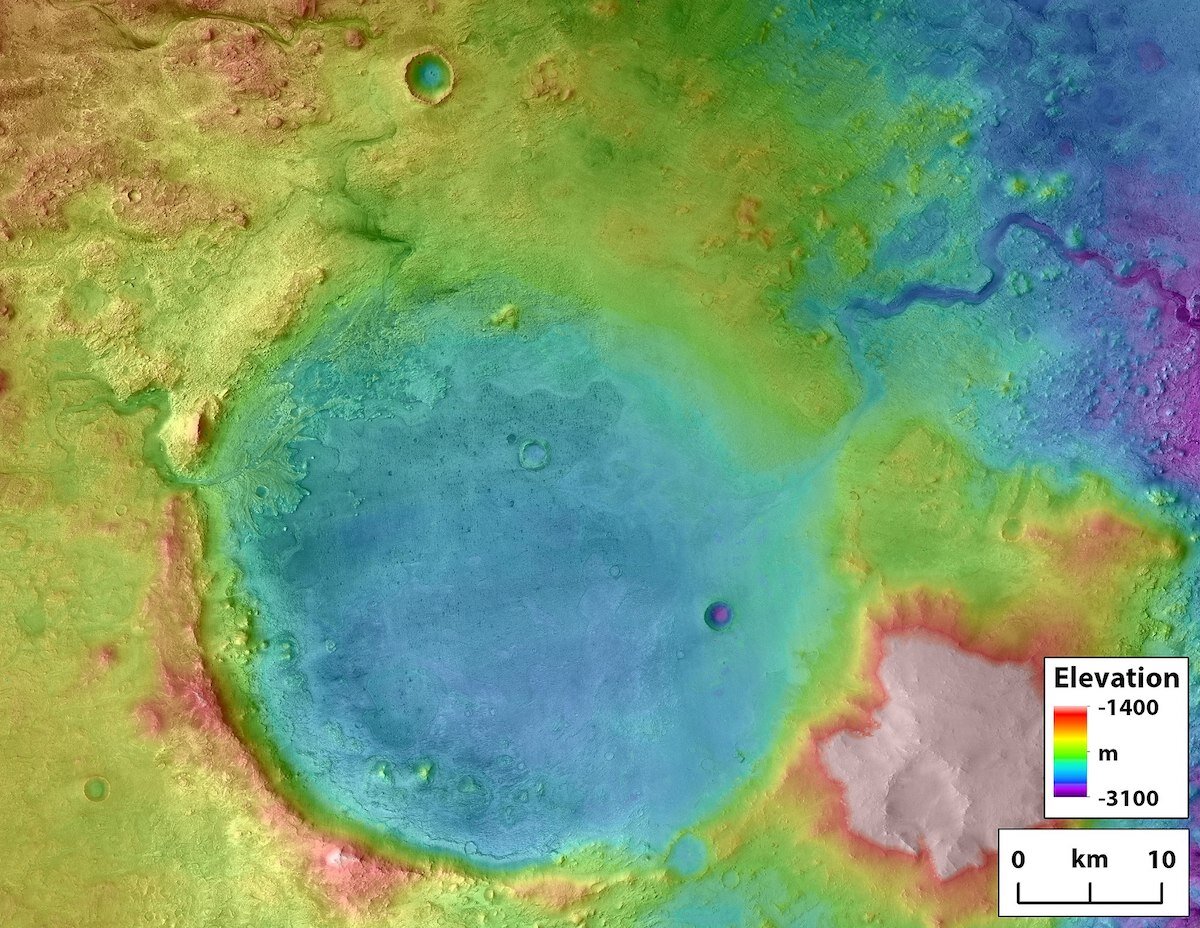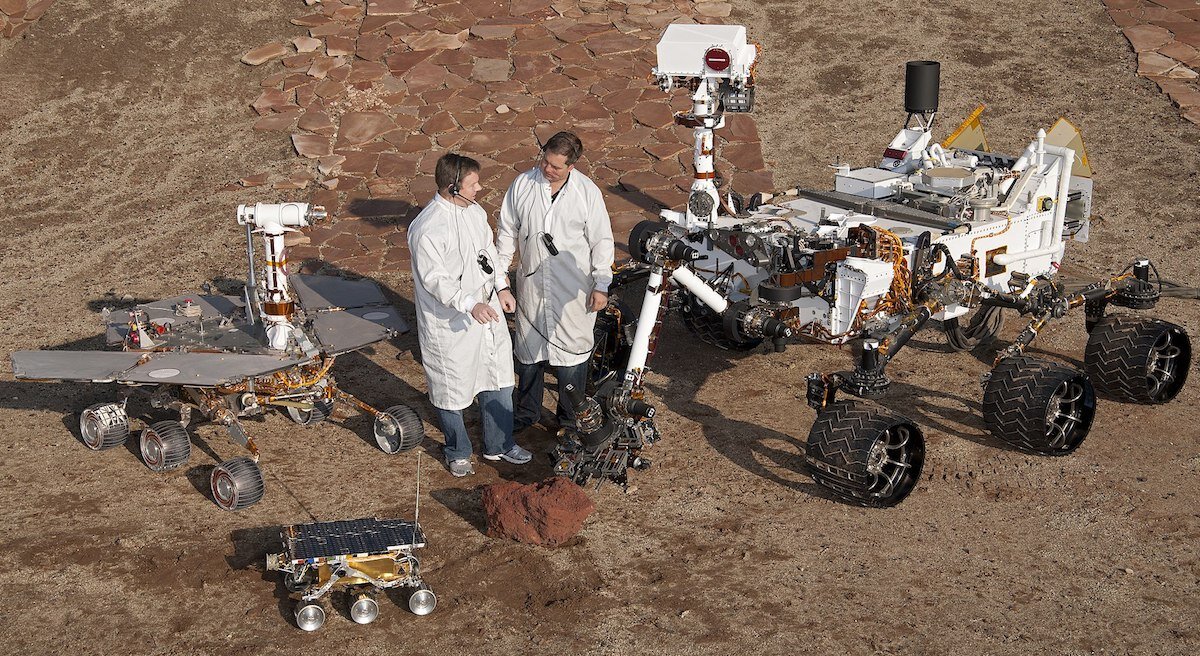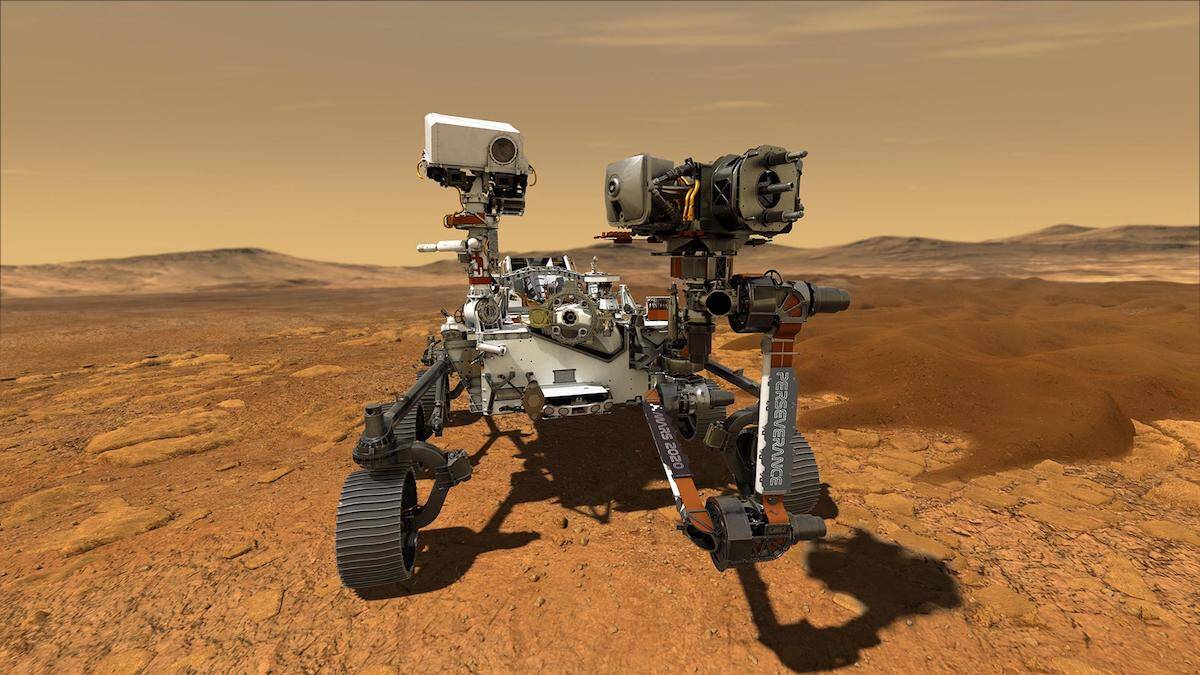In July 2020, NASA launched the latest probe, the Perseverance, bound for Mars. Due to arrive in February 2021, it will utilize the newest technology to gather a broad spectrum of data and physical samples. Like many previous launches to the Red Planet, NASA’s current mission will attempt to answer one question: Is there life on Mars?

Will we ever find life on Mars?
Ever since early man looked to the heavens, the concept of alien life on our celestial neighbor has become one of humanity’s most profound and philosophical mysteries. Yet, even with our most massive telescopes that peer deeply into space, the Martian landscape doesn’t seem like a habitat that can support life.
Much of the surface of Mars is barren. Temperatures can drop to -220⁰F. The Red Planet barely sits inside the Goldilocks Zone — the habitable area where it is “not too hot and not too cold.” There is an atmosphere there, but it is significantly thinner than Earth’s. As a result, ultraviolet radiation is more prevalent on the Martian surface.
The harsh atmosphere probably did not always exist, though. Scientists believe that it was once a lot like Earth is today. Gullies and valleys likely ran with flowing water, which is necessary for life. The thicker atmosphere at the time was inadequate for trapping carbon dioxide. Consequently, a greenhouse effect occurred, and any possible lifeforms perished.
Evidence of Martian Life in Meteorite ALH-84001?
There are possibly 40 billion planets in our galaxy that lie within habitable zones near a star like the Sun. According to new estimates, there are six billion planets similar to Earth in our galactic neighborhood. Statistically, there must be life on some of those planets. Nonetheless, questions about life on Mars have always sparked heated debates, even without conclusive evidence on either side.
Things changed in 1996 when NASA made an announcement that brought the issue back into sharp focus. At their press conference in Washington on August 7, the star of the show was a little Perspex box containing a meteorite. Around 16 million years ago, the 4.5 billion-year-old space rock left its home on Mars. Then approximately 13,000 years ago, it fell to Earth. Scientists discovered the Martian rock in 1984 at Allan Hills, Antarctica, and labeled it ALH-84001. What made this object special were the bacterial fossil-like signatures that astrobiologist David S. McKay found within it. His findings suggested ancient life on Mars and sparked brand new arguments.

This magnified image shows what looks like a microbe in meteorite ALH-84001. Public Domain.
Other Meteorites with Possible Microbial Evidence
ALH-84001’s story is not unique, however. Researchers found clues of fossilized lifeforms in other meteorites: Knyahinya, 1865; Mezö-Madaras, 1852; Mócs, 1882; Nakhla, 1911, Yamato, 2000. But the evidence was disputable because scientists were able to create fossil-like structures in the laboratory under artificial conditions. Therefore, many experts called the fossilized evidence pseudofossils. Still, the structures are very similar to microbial signatures on Earth, and an ancient biological origin on Mars cannot be written off.
Brand new research published in 2019 by Ildiko Gyollai et al. proposes that the structures in meteorite ALH-77005 from Allan Hills (1977), results from Martian microbes.
[blockquote align=”none” author=”Gyollai et al.”]Comparing recent results and interpretation with other meteorites, it can be concluded, that on these similarities the microbially mediated biosignatures can be proposed microbial mediation by FeOB [iron oxidizing bacteria] on Mars. [/blockquote]
Did Intelligent Life on Mars Build the “Canali”
Finding possible microscopic evidence is one thing, but for many years around the turn of the 20th century, people believed that a large civilization of beings lived on Mars. It all started when an Italian astronomer, Giovanni Schiaparelli, trained his 22cm telescope on Mars in 1877. He wanted to catalog and map the Red Planet, which until then, nobody else had done. Schiaparelli’s discovery caused shockwaves in the astronomical community.
He noted that there were areas of the planet that were darker than others and assumed these were seas. As the regions were planet-wide, he postulated that they were somehow connected. The features appeared linear and likely reached distances of hundreds of kilometers in length. In his Italian language, he named them “canali.” The name was something of an unfortunate choice when translated into English. These features came to be known, wrongly, as canals. Schiaparelli really meant “channels,” a natural feature.

Mars map by Giovanni Schiaparelli, 1877.
The media of the time went into overdrive, claiming that Schiaparelli had discovered alien-made canals on Mars. Other astronomers jumped on the “canal” bandwagon. One even postulated that the purpose of the canals was to move water from the wetter Martian poles during a severe drought on the rest of the planet. Then in the early 20th century, bigger telescopes helped scientists understand that the channels were simply optical illusions, not alien-made structures.
Seeking Out New Worlds
As the 1950s drew to a close, the days of merely observing space ended when the Soviet Union successfully launched an artificial satellite. The space race was born, and countries set their sights on the Moon and Mars. However, getting a probe to Mars proved elusive. A substantial number of early missions failed. The teething troubles were so pronounced that scientists joked about the Great Galactic Ghoul: the fictional entity that sabotaged as many missions as possible.
Five NASA Photos That Defy Explanation
In 1976, NASA landed a probe on the surface of Mars. After almost two decades of trying, humankind finally got its first look at another world. Two Viking Landers not only reached the Martian surface but also transmitted data back to Mission Control. Even before touching down, images taken of the region of Mars called Cydonia caused a considerable sensation.

Carl Sagan and Viking I. Public Domain.
One of these images, tentatively labeled “Face,” puzzled everyone. NASA tried to explain it away as our human tendency to find familiar images within inanimate objects, such as the clouds. Still, not everyone accepted that as an explanation. Many people clung to the idea that a complex lifeform had created the face. Making matters worse, additional features dotted around the structure looked like eroding buildings. Despite the public’s arguments for and against, other photographs of the site have proven that the features are natural.
A New Way to Search for Life on Mars
After another hiatus, Mars once again became the focus of attention during the 1990s. NASA sent more probes to explore the Red Planet. Pathfinder was a revolutionary spacecraft that touched down on the surface of Mars in 1997. It possessed a parachute to slow down its descent and a cocoon of airbags to cushion its fall. Pathfinder’s monumental task was to transport a lander and rover safely to the surface of the Red Planet. Sojourner, the robotic rover, was designed to investigate multiple areas. As its top speed was only 0.015 mph, progress was slow.
Front and rear cameras allowed Sojourner to return 550 pictures to NASA. It ran on a combination of solar and battery power. Although NASA expected it to last for just a week, it continued for three months. While it only traveled 300 feet from its transport, it collected over 15 soil and rock samples, plus wind and weather data. Pathfinder sent back 2.3 billion bits of data, and the lander returned 16,500 images. This mission was so successful that it encouraged NASA to continue its search for life on Mars. (NASA).
Tantalizing Signs of Water
Life cannot exist without water. Therefore, the first objective in the hunt for life on Mars was to find evidence of water there. Scientists suspected for many years that Mars was once a very wet place. Before ever landing a rover on the planet, images revealed terrains and geological features that typically result from water. Deltas, lakebeds, glacial activity, and closed and open basins were just some of the visible telltale signs. However, the surface of Mars has been predominantly dry for more than 3 billion years.

Jezero Crater on Mars is an ancient craterlake. Rivers on the upper left once flowed into the lake, and an outlet river canyon is visible in the upper right. Public Domain.
In 2002, NASA’s Odyssey spacecraft detected ice buried in the upper three feet of dirt while it was orbiting the Red Planet. Its sophisticated instrumentation also detected hydrogen, a clear sign of water.
With immense luck in 2004, the Opportunity rover landed in the middle of a crater that showed many signs of water. The project scientist, Joy Crisp, commented, “Signs of water are everywhere! The area was soaked, over and over. First, there was the water from which sulfate salt precipitated. Then, for the rocks at the top of craters, there was water that flowed along, transported and broke down pieces of rock, then deposited it layer by layer. Then, there was water that came and soaked the ground in perhaps several episodes” (NASA).

Three generations of Mars rovers. Front middle is the flight spare for Sojourner. Rear left is the test unit of Spirit and Opportunity. Right is the test rover of Curiosity. Public Domain.
In 2008, Phoenix Mars Lander collected ice samples and “tasted” them to confirm that the ice is composed of H2O. This is important because dry ice consisting of carbon dioxide also exists in abundance on the planet. Phoenix also documented snow falling from Martian clouds. At the same time, calcium carbonate, a mineral that forms in the presence of liquid water, turned up in ice samples. (Kennedy Space Center).
In addition to water-ice, there is evidence that salty water flows seasonally on the surface of the planet. In fact, at one time billions of years ago, large floods swept vast areas.
Organic Molecules on the Red Planet
The last rover to land on Mars arrived there in late 2012. Curiosity was the most massive vehicle, weighing in at one ton. By 2018, Curiosity had made some fundamental discoveries that helped us better understand Martian history. Inside a rock about as old as the planet itself, the rover found organic molecules. Such molecules often contain the basic building blocks of life.
The Curiosity rover outlived all of its predecessors, although nobody can accurately predict how long it will continue. Regardless, the mission was a huge success.
2020 Perseverance Rover
NASA still is not done looking for life on Mars. In July 2020, Perseverance took off and should arrive there in February 2021. This ultra-technical rover will remain on the Martian surface for an entire Martian year (687 days).
[blockquote align=”none” author=”NASA”]The Perseverance rover will seek signs of ancient life and collect rock and soil samples for possible return to Earth[/blockquote]
Perseverance has a whole new range of technology incorporated into its systems. Perhaps the most sophisticated of which is the Terrain Relative Navigation (TRN), which should sense any possible hazardous terrain. The rover can then avoid or circumvent the danger. An additional part of this new design is an onboard microphone that will enable engineers to analyze telemetry (measurements) received during the descent and upon touchdown.

The Perseverance rover will look for signs of life on Mars. Public Domain.
For the first time, NASA will deploy a helicopter called Ingenuity on the surface of Mars. During its long journey across the solar system, Ingenuity lies inside the “belly” of Perseverance, protected by shielding. Once Perseverance lands safely on Mars, technicians will drop the shield and release the helicopter with a few commands. It has an operating range of 300 meters and is capable of a single daily flight of around 90 seconds. Cameras onboard Ingenuity will capture images from unprecedented vantage points on the Red Planet and relay them to Perseverance and the orbiter.
Proof of Life on Mars
Many scientists strongly suspect that life once existed on Mars. As NASA continues its quest for answers, each mission returns more suggestive data. If there were organisms there, no one knows yet precisely how complex they were. But it may not even matter. For all us who have ever stared up into the night sky and wondered about what exists in space, even a microscopic bacteria will be big news.
Additional sources:
Scientific American
Smithsonian Magazine
MIT